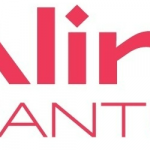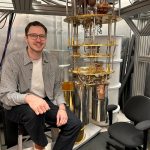Quantum News Briefs July 10: Sweden, Finland eye quantum tech leap amid call for official strategy; New tool helps improve quantum computing circuit component; Simple data gets the most out of quantum machine learning + MORE

Quantum News Briefs July 10:
Sweden, Finland eye quantum tech leap amid call for official strategy
 Gerard O’Dwyer of DefenseNews writes that Nordic defense companies could have a greater share of the world’s quantum computing market, as regional players Sweden and Finland each aim to advance their capabilities using the disruptive technology. Quantum News Briefs summarizes O’Dwyer’s July 7 article.
Gerard O’Dwyer of DefenseNews writes that Nordic defense companies could have a greater share of the world’s quantum computing market, as regional players Sweden and Finland each aim to advance their capabilities using the disruptive technology. Quantum News Briefs summarizes O’Dwyer’s July 7 article.
Sweden wants to use quantum technology to improve the performance of radar systems under the purview of the Chalmers University of Technology, In Finland, the state-funded organization VTT Research wants to bolster the processing capability of an existing quantum computer.
“There are many reasons why the defense industry might want to monitor, if not engage with, the quantum computer projects running in Sweden and Finland. It is generally recognized in defense quarters — and increasingly by governments, too — that while quantum science is a positive, its disruptive nature will bring challenges and a certain degree of threat,” Lars Sundström, an independent computer industry analyst based in Stockholm, told Defense News. “The big defense and cybersecurity players in the Nordic region are already connected in some way, and indirectly to the quantum projects in Finland and Sweden. Saab is probably the most well-known name in the mix,” Sundström added.
Saab is an “industrial partner” to the Wallenberg Centre for Quantum Technology, a co-partner with CUT in the quantum computer project. Saab is currently running several PhD-level projects at the center aimed at developing new applications for the defense industry, the most high-profile of which is for a quantum-enhanced noise radar.
Five organizations released a report in March, titled “A Swedish Quantum Agenda,” calling for a Swedish national strategy for quantum technology.
The document maps out how to deliver long-term financial support for related research, said Darja Isaksson, director general at the innovation funding agency Vinnova, one of the organizations that authored the report. The others are RISE, a research and innovation institute; Swelife, a life science-focused funding agency; the Swedish Research Council, the country’s largest governmental research funding body; and WACQT.
The report concludes that Sweden’s defense and national security sectors could harvest real value from four subfields — quantum computers, quantum simulators, quantum communication and quantum sensors — by using spinoff disruptive technologies to both create new and improve existing applications. Click here to read O’Dwyer’s article in-entirety.
New tool helps improve quantum computing circuit component
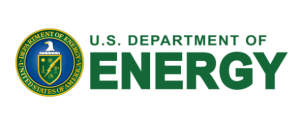 The team of scientists from the U.S. Department of Energy’s (DOE) Ames National Laboratory in partnership with the Superconducting Quantum Materials and Systems Center (SQMS), a DOE National Quantum Information Science Research Center led by Fermilab, used the terahertz SNOM microscope, originally developed at Ames Lab, to investigate the interface and connectivity of a nano Josephson Junction (JJ).
The team of scientists from the U.S. Department of Energy’s (DOE) Ames National Laboratory in partnership with the Superconducting Quantum Materials and Systems Center (SQMS), a DOE National Quantum Information Science Research Center led by Fermilab, used the terahertz SNOM microscope, originally developed at Ames Lab, to investigate the interface and connectivity of a nano Josephson Junction (JJ).
The JJ, a key component in superconducting quantum computers, was fabricated by Rigetti Computing, an SQMS partner. The JJ effectively generates a two-level system at very low cryogenic temperature that produces a quantum bit. The images they obtained with the terahertz microscope revealed a defective boundary in the nano junction that causes a disruption in the conductivity and serves as a challenge to produce long coherence times needed for the quantum computation.
Jigang Wang, a scientist from Ames Lab and leader of the research team, explained that this JJ facilitates the supercurrent flow through the circuit at cryogenic temperature, which makes it possible for qubits to exist in their quantum state. It is important that this flow remain uniform and non-dissipative to keep the system coherent.
“The complex structural components in the quantum circuits often lead to local electrical field concentration, which causes scattering and energy dissipation and ultimately decoherence,” Wang explained. “So the question for the current quantum computing business is how to mitigate the decoherence.”
Wang explained that this finding was important for two reasons. First, it identified an issue with the JJ fabrication, which Rigetti can now resolve thus improving their quantum circuit quality. Secondly, it proves that the terahertz microscope developed at Ames Lab is a useful tool for high throughput screening of quantum circuit components.
Wang emphasized that the advancements in this project would not have been possible if Ames Lab were not a member of the SQMS community. “It has been really a privilege to work with them and to contribute as a community to push things forward. It took a village to really solve this type of very complex technological and scientific problem. And it has been really, really important to have this versatile team,” Wang said. “I’m also very happy that as part of Ames Lab we are contributing to the SQMS center and national quantum initiative in an important way.”
Simple data gets the most out of quantum machine learning
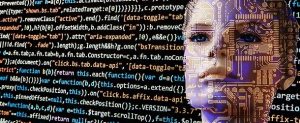 New theoretical research proves that machine learning on quantum computers requires far simpler data than previously believed. Quantum News Briefs summarizes a July 7 article about the research in HomelandSecurityToday.
New theoretical research proves that machine learning on quantum computers requires far simpler data than previously believed. Quantum News Briefs summarizes a July 7 article about the research in HomelandSecurityToday.
The finding paves a path to maximizing the usability of today’s noisy, intermediate-scale quantum computers for simulating quantum systems and other tasks better than classical digital computers, while also offering promise for optimizing quantum sensors.
“We show that surprisingly simple data in a small amount is sufficient to train a quantum neural network,” said Lukasz Cincio, a quantum theorist at Los Alamos National Laboratory. He is a co-author of the paper containing the proof published in the journal Nature Communications. “This work takes another step in the direction of making quantum machine learning easier, more accessible and more near-term.”
“In practical terms, it means you can train a neural network on not only just a few pictures of cats, for example, but also on very simple pictures,” Cincio said. “For quantum simulations, it means you can train on quantumly simple states.”
“Those states are easy to prepare, which makes the entire learning algorithm much easier to run on near-term quantum computers,” said co-author Zoe Holmes, professor of physics at École Polytechnique Fédérale de Lausanne and former Los Alamos postdoc.
The new paper shows that using simpler data allows a less-complex quantum circuit to prepare a given quantum state on the computer, such as a quantum-chemistry simulation showing the evolution of a system of molecules. A simple circuit is easy to implement, less noisy and thus able to complete a computation. The new Nature Communications paper demonstrates a method for compiling quantum machine-learning algorithms using simple-to-prepare states. Click to read the comprehensive article in-entirety in HomeLandSecurityToday.
Quantum Xchange announces the general availability of CipherInsights™ for cryptographic risk management
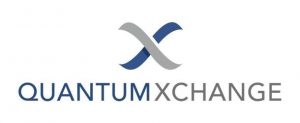 Quantum Xchange recently announced the general availability of CipherInsights™, a network monitoring, cryptographic discovery, and risk assessment tool.
Quantum Xchange recently announced the general availability of CipherInsights™, a network monitoring, cryptographic discovery, and risk assessment tool.
An alarming 80% of network traffic has some defeatable flaw in its encryption. Large, legacy systems are often fraught with old and outdated cryptographic standards such as MD5, SHA-1, TLS 1.1, or SSL 3.0 in use years after they’ve been deemed unreliable. This common occurrence exposes data and communication networks to unnecessary risk and introduces vulnerabilities ready for exploitation by bad actors.
Deployed as a passive listener on the network, CipherInsights from Quantum Xchange continuously monitors dozens of risk factors in near real time, including where encryption is deficient or outright lacking. By helping to identify outdated cryptographic protocols in use, weak or poorly signed certificates, or communications that should be encrypted but appear in clear text, enterprises can prioritize risk remediation, maintain compliance, enforce policies, and improve their overall security posture.
Cryptographic clarity will play an important role in coming years as most organizations will need to identify and replace quantum-vulnerable public key encryption with NIST-backed post-quantum cryptography. Understanding when, where, and how outdated cryptographic protocols are used throughout the enterprise will be a critical first step in this inevitable, multiyear cryptographic transition.
“The addition of CipherInsights to the Quantum Xchange product portfolio supports our ongoing mission to shift how government agencies and commercial businesses treat and manage cryptography today and in the post-quantum future,” said Eddy Zervigon, CEO of Quantum Xchange. “To fully realize the promise of a crypto-agile infrastructure, organizations must be able to discover, deploy, and manage cryptography holistically and through policy. Quantum Xchange is delivering on this promise with the immediate function of CipherInsights and the patented, quantum-safe, and crypto-agile technologies and management capabilities of our flagship platform Phio TX.”
Sold as a software license, CipherInsights’ total cost of ownership varies depending on the size and complexity of the customer’s network. To learn more about CipherInsights from Quantum Xchange download the data sheet here. To read the complete June 28 announcement click here.
Sandra K. Helsel, Ph.D. has been researching and reporting on frontier technologies since 1990. She has her Ph.D. from the University of Arizona.




















